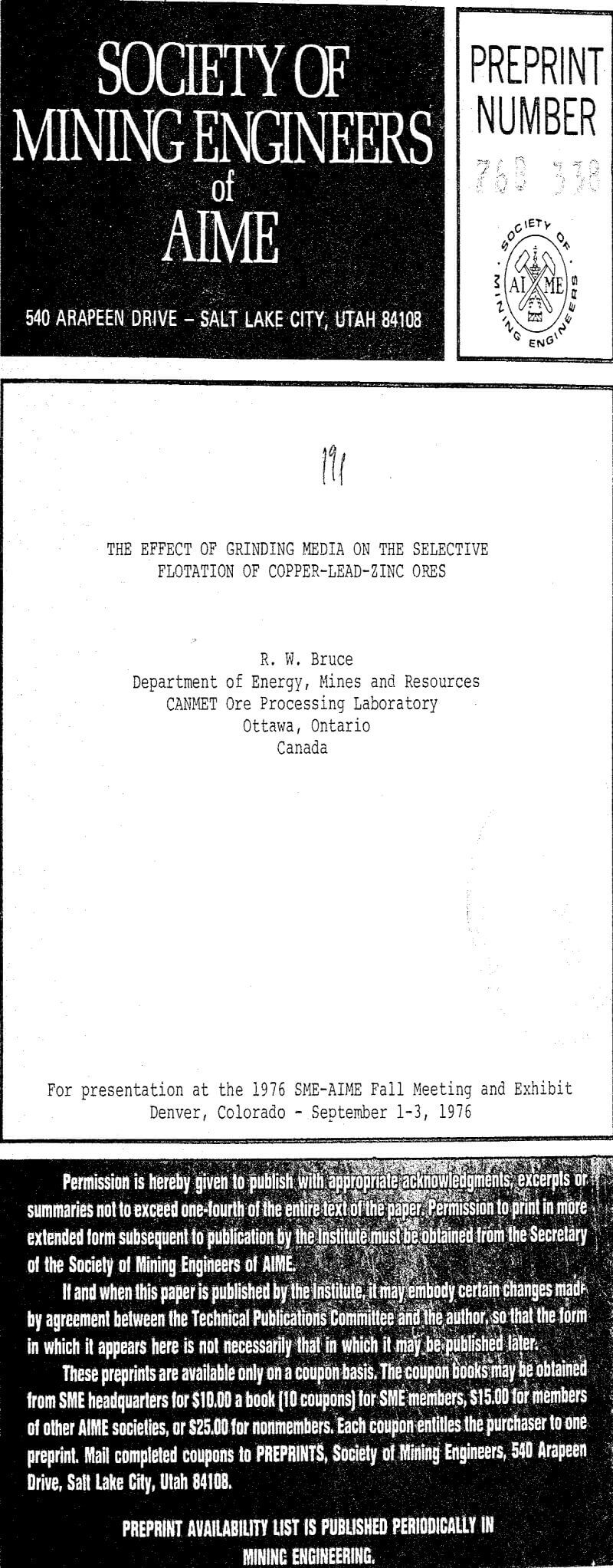The normal practice for processing complex sulphide ore has been to grind with steel balls and/or rods in steel mills before flotation. Little thought had been given to the effect of grinding media on flotation selectivity of copper – lead zinc ore.
Ore Sample
The mill feed for the pilot-plant investigation was from a copper-zinc producing mine in northwestern Quebec. A 200 ton sample was made available, free of charge, thanks to the co-operation of a Canadian mining company. The ore had the advantage that it was a two-metal-component ore, allowing for a somewhat simpler flowsheet than that required for a copper-lead-zinc ore but, at the same time, it was a massive-sulphide type ore requiring relatively fine grinding for liberation of the copper and zinc minerals.
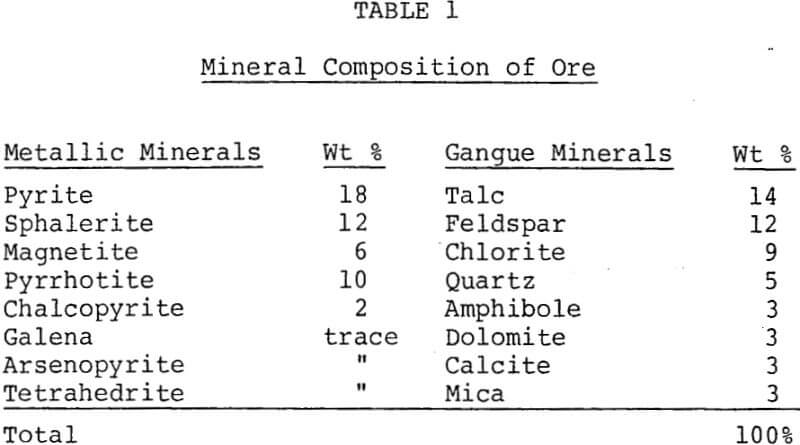
The crushed ore is ground in a conventional two-stage rod mill-ball mill circuit to a fineness of approximately 76% minus 200 mesh using steel rods and balls, and cyclone classification. The ground pulp is conditioned in aerators and the chalcopyrite is selectively floated with three stages of cleaning to produce a final copper concentrate.
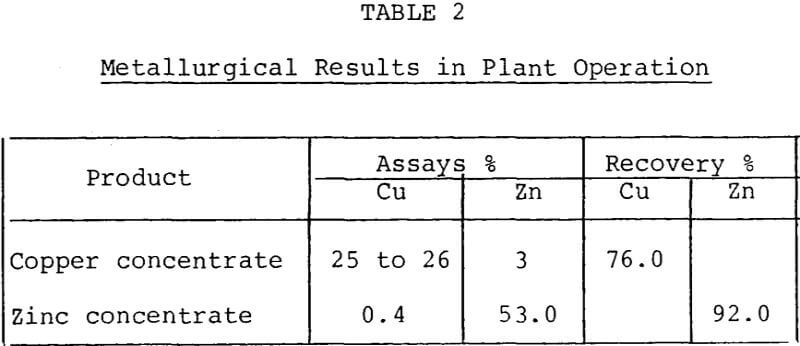
Details of Investigation
The minus ½ inch ore was ground in a- 4 ft x 3 ft Hendy Ball Mill containing 1150 lb of steel balls. The ball mill discharge was pumped to a 3 inch Krebs cyclone. The cyclone underflow was returned to the mill and the overflow made up the feed to flotation.
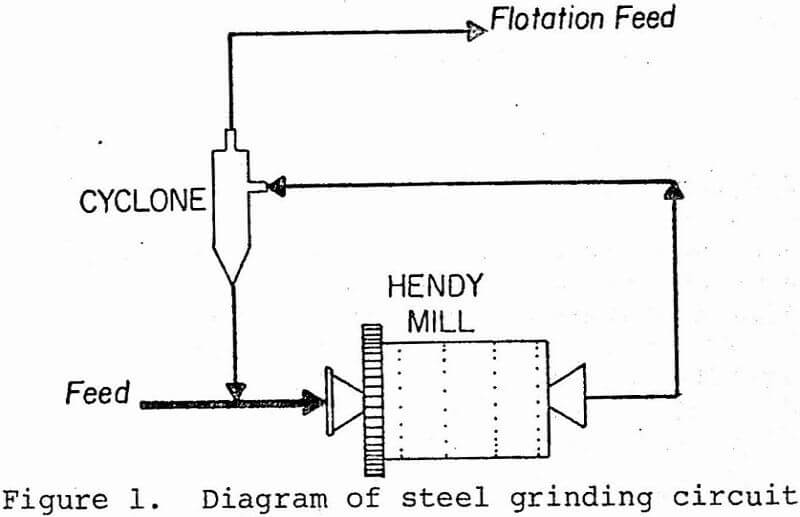
To meet the target grind of 85% minus 200 mesh, it was found necessary to crush the ore to minus ¼ inch. The minus ¼ inch ore was ground at a feed rate of 510 lb per hour in a 3 ft x 4 ft rubber-lined Sala pebble mill containing 1208 lb of flint pebbles.
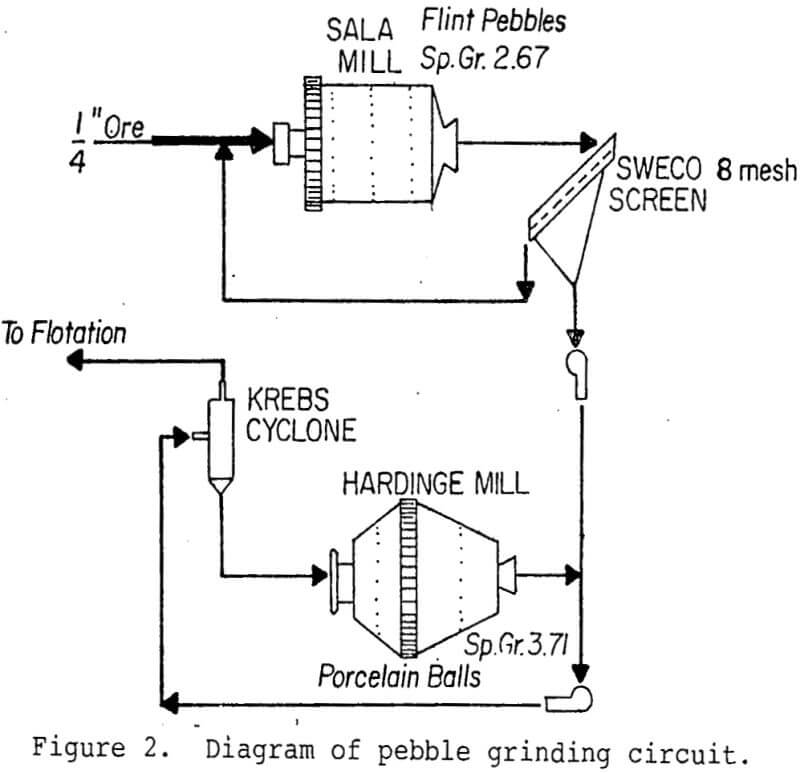
The autogenous grinding circuit consisted of a primary Cascade mill, followed by a secondary Sala pebble mill. In the primary grinding stage, a 6 ft x 2 ft Cascade mill was operated in closed-circuit with a 30 inch Sweco screen, equipped with a ¼ inch top screen and a 10 mesh bottom screen. The feed rate to the Cascade mill was maintained at 512 lb per hour, with 20 per cent plus 6 inch ore, 30 per cent plus 3 inch ore, and 50 per cent minus 3 inch ore.
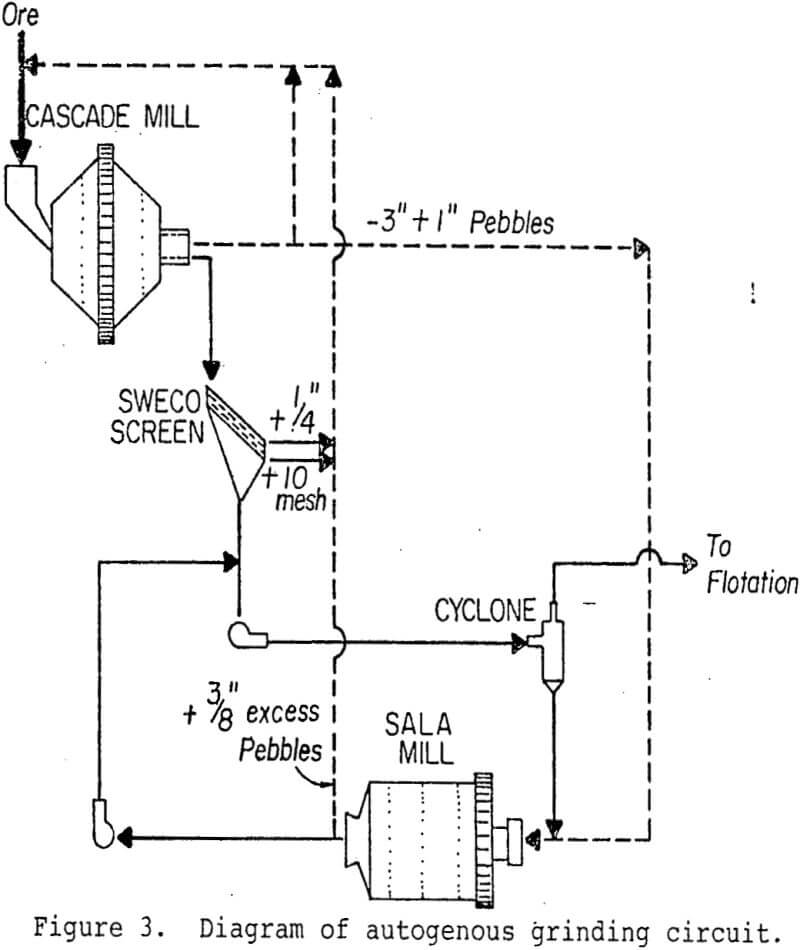
Flotation
A standard continuous flowsheet was developed in the first series of tests using the steel grinding-cyclone classification method. The standard flowsheet was used to study the effect of the various grinding media on the response of the ore to selective flotation.
When stable conditions were obtained in which the day shift results were readily reproducible, each grinding condition was tested for 60 hours of continuous operation during which time identical flotation conditions were maintained. Sampling of the grinding and flotation circuits was done every half hour during the continuous 60 hour runs.
The metallurgical results showed that the copper concentrate grade decreased from 27.8% Cu with steel balls to 26.7% Cu with pebbles to 25.5% Cu with autogenous grinding. However, this decrease in grade was more than offset by an increase in copper recovery from 78.0% to 82.2% to 84.8% in going from steel to pebbles to autogenous grinding respectively.
Examining whether there was any loss in selectivity between chalcopyrite and sphalerite in grinding in the absence of steel, it was seen that there was a slight increase in the amount of zinc that floated with the copper during both pebble and autogenous grinding. However, this is more than compensated by the improved recovery of both copper and zinc.
